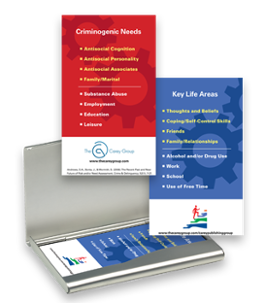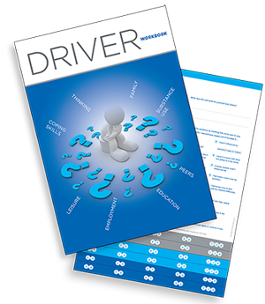An important concept to understand when it comes to helping reduce crime and recidivism rates is correctly identifying and addressing the criminogenic needs of people involved in the justice system. Since the 1980s, the 8 criminogenic needs have been discussed as risk factors for crime and recidivism. Research backed by organizations such as the National Institute of Health shows that addressing these needs with evidence-based practices - strategies that have been demonstrated to improve outcomes while maximizing the investment of resources – is proven to decrease violence and offenses.
Punishment: Does it Help Reduce Crime or Recidivism?
Historically, the United States’ response to crime has not gone much farther than making it illegal. In other words, public policies are designed to react to crime with punishment rather than work to prevent it by addressing individual needs and risk factors. Some may argue that the threat of punishment is (or should be) enough to deter a person from illegal activities, but data shows that it isn’t:
- The United States has the highest incarceration rate of any other country.
- The Bureau of Justice Statistics with the U.S. Department of Justice states that an estimated 68% of justice-involved people return to prison within three years, and over 80% return after nine years.
The 8 Criminogenic Needs
Carey Group, a national consulting and publishing firm that equips justice system and behavioral health professionals with knowledge, skills, and tools that improve the lives of clients, offers The Criminogenic Needs Pocket Cards that list the 8 criminogenic needs.
The Criminogenic Needs Pocket Cards


The needs are:
- Antisocial Cognition
- Antisocial Personality
- Antisocial Associates
- Family/Marital
- Substance Abuse
- Employment
- Education
- Leisure
Failure to address these needs does not certainly lead to criminal activity, but it does indicate that the person may be more likely to engage in illegal behavior. As such, identifying these factors can get to the root cause of behavior, help an individual heal, and reduce crime.
Addressing Criminogenic Needs with Evidence-Based Practices
Criminogenic needs can be mitigated with evidence-based practices (EBP) designed to provide resources, strengthen coping mechanisms, keep families together, offer employment assistance, and work through trauma.
EBP essentially offers protective factors – the opposite of risk factors – to individuals who have committed crimes, exemplify negative behaviors, or express unmet criminogenic needs such as family instability, poor quality relationships, unemployment, or inadequate academic performance. Risk factors can be addressed through various cognitive behavioral intervention programs to help individuals involved in the justice system change their thoughts and actions and get on a path toward a healthy future. That said, programs that target the 8 criminogenic needs must be accessible to those who need them most. Additionally, those individuals must understand what is available to them and how they can go about getting the help they need.
Evidence-Based Practices at Carey Group
Carey Group is proud to offer hands-on tools for staff and clients to identify criminogenic needs and develop strategies for success. Research demonstrates that people’s behavior can be positively influenced when we correctly identify and address their criminogenic needs. The Criminogenic Needs Pocket Cards are designed to ensure that staff know—and focus their efforts on—these key areas. One side of the card lists the 8 most influential criminogenic needs. The other side translates these risk factors into language more appropriate for a discussion with clients. The Criminogenic Needs Pocket Cards are excellent for identifying and linking criminogenic needs to scenarios.
Additionally, interventions are most effective when they focus specifically on a person’s criminogenic needs. The challenge is that actuarial assessment tools often identify a cluster of dynamic risk factors but generally do not identify the “driver”: the criminogenic need that is most likely driving a person’s harmful behavior. The Driver Workbook was developed to fill the gap. Working through the Driver Workbook collaboratively helps build understanding and rapport and assists staff and clients in prioritizing case plan goals.
View the Driver Workbook today!

Evidence shows that neither punishment nor the threat of punishment deters individuals from entering or re-entering the justice system. Fortunately, addressing the 8 criminogenic needs has proven to be effective in reducing crime and recidivism. Community-based programs that recognize and address these needs can provide individuals with the tools required for reformation and success.
Carey Group (Consulting and Publishing) is a national consulting and publishing firm that equips justice system and behavioral health professionals with knowledge, skills, and tools that improve the lives of clients. To learn more about our interactive tools, visit our Products page by clicking here


